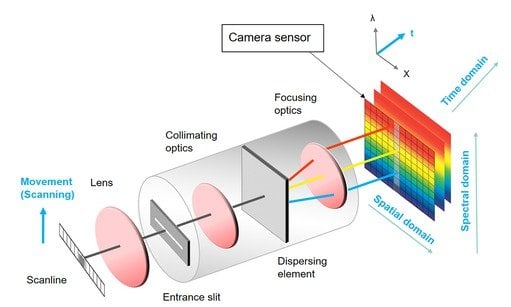www.industry-asia-pacific.com
02
'19
Written on Modified on
STEMMER IMAGING announces major updates to CVB machine vision programming library
The release of CVB 2019 introduces new APIs to provide an innovative way of developing machine vision solutions with Common Vision Blox, together with an impressive range of new tools. These tools provide functionality for hyperspectral and polarisation imaging, as well as OPC UA machine to machine communication capability for Industry 4.0 requirements. In addition it is now possible to develop machine learning solutions on embedded platforms. Object recognition speeds have been greatly increased, as have video sequence recording speeds.

CVB Image Manager and CameraSuite 2019 feature three new object-oriented APIs, supporting C++, .NET and Python. These APIs make getting started with Common Vision Blox significantly easier and help eliminate some of the most common programming issues in lifetime and memory management. Python support in particular brings the power and speed of CVB to a new group of users who are used to quick results and easy programming.
The new APIs are compatible with the existing CVB API, meaning that users can build on existing applications without having to re-write their codebase. Linux support now covers Ubuntu 18.04 as well as 16.04 on Intel platforms and ARM. CVB software protection (WIBU dongles and CameraSuite licence) is also now working on ARM.
The CVB Foundation Package 2019 now benefits from a communication framework for Industry 4.0 (OPC UA) and polarisation functionality as well as improvements to the speed and stability of 3D calibration in Metric. The OPC UA framework allows OPC UA server and client functionality. It is useful for machine-to-machine communications between vision systems and robots or PLCs, for example and is an integral part of an Industry 4.0 connected factory.
Polarization is a full toolbox to get the most from the polarisation cameras. It allows easy access to the data from the polarisation sensors from Teledyne DALSA and Sony (used in many camera families). Everything from simple ‘de-mosaicing’ to ‘minimum reflection images’ to Stokes’ parameters and the angle/degree of polarisation can be handled, enabling reflectivity and surface-normal calculations to be made for applications in a wide range of industries.
CVB Spectral is a completely new tool to help industrial users harness the power of hyperspectral imaging for scientific, wavelength-based analysis. CVB Spectral is a complete toolbox for acquiring and preparing hyperspectral data from hyperspectral cameras and ENVI files so that traditional image processing tools can be used on the results. A hyperspectral data-cube, which can also be acquired, saved and loaded using CVB Spectral, can be corrected for optical and lighting effects to create wavelength-correct RGB or LAB colour data. This gives real area colorimetry information far more accurately than can be achieved with 3-chip cameras. The data-cube can also be sliced to produce useful 2D images for further processing. Typically these might be (x, wavelength) or (y,wavelength) at a certain x or y value.
CVB 2019 also contains some significant updates to existing tools. Recognising the importance of embedded vision and machine learning as key machine vision themes, the CVB Polimago machine learning tool is now available for Linux on Intel and ARM platforms. A raw recording method has been added to CVB Movie. This makes full use of the speed of the disks and the data-formats of the camera to allow recording speeds of gigabytes per second. In addition, CUDA support has been added to the 64-bit Windows version of CVB ShapeFinder. This means that with the right GPU hardware it is possible to increase search speed by 250%. An NVidia Jetson version is also available on request.
www.stemmer-imaging.com

